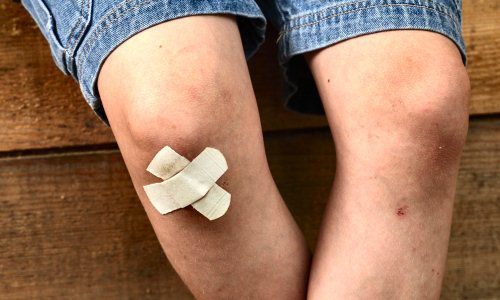Scientists at EPFL have greatly improved the effectiveness of growth factors, paving new strategies for regenerative medicine.
When we are wounded, our bodies naturally begin repairing the damaged tissue. This process is mediated by molecules called growth factors, which are proteins that occur naturally in our cells and guide processes ranging from healing to embryonic development. Given their regenerative role in the body, growth factors could be used in trauma situations to quickly repair wounds and avoid blood loss and further health complications. However, their use in drugs has been met with little success. Publishing in Science, an EPFL group has bioengineered growth factors to significantly improve their efficiency in soft tissue and bone repair, while maintaining low and safe doses.
Growth factors are explored in a wide range of clinical applications. A major one is regenerative medicine, which addresses tissue repair and wound healing. A number of growth factors have been put into drugs to promote new bone formation, and even to trigger the generation of granulation tissue – a collagen-rich tissue that forms at the site of an injury. However, growth factors have been somewhat disappointing in the clinic and have failed to fully reproduce the healing effect of their natural counterparts.
Normally, growth factors work by binding proteins on something called the ‘extracellular matrix’. This is a structure that surrounds organs and tissues in the body and supports them. The higher the strength of binding, the better the efficiency of the growth factor during wound healing.
A group led by Jeffrey A. Hubbell at EPFL tested the binding of twenty-five growth factors against key proteins of the extracellular matrix. After the test, the researchers were able to select a growth factor called PIGF-2, which showed the strongest binding across all proteins, meaning that it could have the highest efficiency.
The scientists isolated the section of growth factor PIGF-2 that is responsible for its powerful binding. By fusing that sequence to three other less efficient growth factors they were able to increase their binding strength by 2- to 100-fold, which could reduce the need for higher doses in the future. In addition, these bioengineered growth factors showed that they could mimic interactions in the formation of a blood clot, which would be an added benefit in wound-healing.
The group also tested low-dose, topical application of growth factors on mice. Compared to their unmodified counterparts, the growth factors that were fused with the PIGF-2 sequence resulted in much faster wound closing and production of granulation tissue, and also led to a more pronounced new blood vessel formation, which is essential in sustaining the latter. The researchers also saw similar effects in bone repair, with the engineered growth factors showing a much higher deposition of bone tissue in rats.
The results show that a relatively simple modification can greatly improve the clinical potential of growth factors, by making them more efficient, cost-effective and safe. The group is now fusing the PIGF-2 sequence to additional growth factors, which they can do in a virtually plug-and-play fashion. “Evolution has provided a close interaction between the extracellular matrix and growth factors”, says Hubbell. “By re-engineering the molecules, we are able to exploit that interaction and open the way for clinical translation, turning these molecules into useful drugs.” The researchers are now planning to extend their studies to larger animal models and eventually begin preliminary human trials.
Story Source:
The above story is based on materials provided by Ecole Polytechnique Fédérale de Lausanne.





